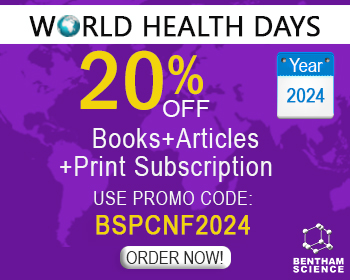Abstract
Background: The digestive tract represents an interface between the external environment and the body where the interaction of a complex polymicrobial ecology has an important influence on health and disease. The physiological mechanisms that are altered during hospitalization and in the intensive care unit (ICU) contribute to the pathobiota’s growth. Intestinal dysbiosis occurs within hours of being admitted to ICU. This may be due to different factors, such as alterations of normal intestinal transit, administration of various medications, or alterations in the intestinal wall, which causes a cascade of events that will lead to the increase of nitrates and decrease of oxygen concentration, and the liberation of free radicals.
Objective: This work aims to report the latest updates on the microbiota’s contribution to developing sepsis in patients in the ICU department. In this short review, the latest scientific findings on the mechanisms of intestinal immune defenses performed both locally and systemically have been reviewed. Additionally, we considered it necessary to review the literature on the basis of the many studies carried out on the microbiota in the critically ill as a prevention to the spread of the infection in these patients.
Materials and Methods: This review has been written to answer four main questions:
1- What are the main intestinal flora’s defense mechanisms that help us to prevent the risk of developing systemic diseases?
2- What are the main Systemic Abnormalities of Dysbiosis?
3- What are the Modern Strategies Used in ICU to Prevent the Infection Spreading?
4- What is the Relationship between COVID-19 and Microbiota?
We reviewed 72 articles using the combination of following keywords: "microbiota" and "microbiota" and "intensive care", "intensive care" and "gut", "critical illness", "microbiota" and "critical care", "microbiota" and "sepsis", "microbiota" and "infection", and "gastrointestinal immunity" in: Cochrane Controlled Trials Register, Cochrane Library, Medline and Pubmed, Google Scholar, Ovid/Wiley. Moreover, we also consulted the site ClinicalTrials.com to find out studies that have been recently conducted or are currently ongoing.
Results: The critical illness can alter intestinal bacterial flora leading to homeostasis disequilibrium. Despite numerous mechanisms, such as epithelial cells with calciform cells that together build a mechanical barrier for pathogenic bacteria, the presence of mucous associated lymphoid tissue (MALT) which stimulates an immune response through the production of interferon-gamma (IFN-y) and THN-a or or from the production of anti-inflammatory cytokines produced by lymphocytes Thelper 2. But these defenses can be altered following hospitalization in ICU and lead to serious complications, such as acute respiratory distress syndrome (ARDS), health care associated pneumonia (HAP) and ventilator associated pneumonia (VAP), systemic infection and multiple organ failure (MOF), but also to the development of coronary artery disease (CAD). In addition, the microbiota has a significant impact on the development of intestinal complications and the severity of the SARS-COVID-19 patients.
Conclusion: The microbiota is recognized as one of the important factors that can worsen the clinical conditions of patients who are already very frail in the intensive care unit. At the same time, the microbiota also plays a crucial role in the prevention of ICU-associated complications. By using the resources that are available, such as probiotics, synbiotics or fecal microbiota transplantation (FMT), we can preserve the integrity of the microbiota and the GUT, which will later help maintain homeostasis in ICU patients.
Keywords: Microbiota and ICU, ICU and GUT, microbiota and critical illness, microbiota and critical care, sepsis, infection, gastrointestinal immunity, SARS-COVID19.
[http://dx.doi.org/10.1111/imm.12231] [PMID: 24329495]
[http://dx.doi.org/10.1038/nri2707] [PMID: 20098461]
[http://dx.doi.org/10.1111/j.0105-2896.2009.00874.x] [PMID: 20193025]
[http://dx.doi.org/10.1084/jem.20070602] [PMID: 17620362]
[http://dx.doi.org/10.1126/science.aac7436] [PMID: 26113704]
[http://dx.doi.org/10.1172/JCI78366] [PMID: 25271724]
[http://dx.doi.org/10.1038/nature18847] [PMID: 27383981]
[http://dx.doi.org/10.1056/NEJMra1600266] [PMID: 27974040]
[http://dx.doi.org/10.1182/blood-2018-11-844555] [PMID: 30898860]
[http://dx.doi.org/10.1126/science.1110591] [PMID: 15831718]
[http://dx.doi.org/10.2174/1574887115666200811105251] [PMID: 32781963]
[http://dx.doi.org/10.23736/S0375-9393.20.14278-0] [PMID: 32368882]
[http://dx.doi.org/10.1016/S2213-2600(15)00427-0] [PMID: 26700442]
[http://dx.doi.org/10.1038/nri2316] [PMID: 18469830]
[http://dx.doi.org/10.1007/s12015-006-0048-1] [PMID: 17625256]
[http://dx.doi.org/10.3390/ijerph18084242] [PMID: 33923612]
[http://dx.doi.org/10.1084/jem.20081712] [PMID: 19273624]
[http://dx.doi.org/10.4049/jimmunol.178.8.4937] [PMID: 17404275]
[http://dx.doi.org/10.1084/jem.20090900] [PMID: 19995958]
[http://dx.doi.org/10.1079/PNS2001118] [PMID: 12069394]
[http://dx.doi.org/10.1016/j.it.2004.09.005] [PMID: 15489184]
[http://dx.doi.org/10.3389/fimmu.2012.00329] [PMID: 23181060]
[http://dx.doi.org/10.1073/pnas.1113246109] [PMID: 22232693]
[http://dx.doi.org/10.1016/j.surg.2012.06.022] [PMID: 22862900]
[http://dx.doi.org/10.1007/s10620-011-1649-3] [PMID: 21384123]
[http://dx.doi.org/10.1001/jama.2009.1754] [PMID: 19952319]
[http://dx.doi.org/10.1097/SHK.0000000000000534] [PMID: 26863118]
[http://dx.doi.org/10.2353/ajpath.2010.091069] [PMID: 20348235]
[http://dx.doi.org/10.1007/s10620-010-1418-8] [PMID: 20931284]
[http://dx.doi.org/10.1038/nature09944] [PMID: 21508958]
[http://dx.doi.org/10.1007/s00134-016-4613-z] [PMID: 27837233]
[http://dx.doi.org/10.1128/mBio.01361-14] [PMID: 25249279]
[http://dx.doi.org/10.1128/mSphere.00199-16] [PMID: 27602409]
[http://dx.doi.org/10.1128/AEM.01437-16] [PMID: 27590821]
[http://dx.doi.org/10.1097/00000658-199308000-00001] [PMID: 8342990]
[http://dx.doi.org/10.1371/journal.pone.0008578] [PMID: 20052417]
[http://dx.doi.org/10.1128/mBio.02287-16] [PMID: 28196961]
[http://dx.doi.org/10.1513/AnnalsATS.201501-029OC] [PMID: 25803243]
[http://dx.doi.org/10.1378/chest.111.5.1266] [PMID: 9149581]
[http://dx.doi.org/10.1186/2049-2618-1-19] [PMID: 24450871]
[http://dx.doi.org/10.1016/0140-6736(90)92758-A] [PMID: 1971077]
[http://dx.doi.org/10.1016/j.jcrc.2016.07.019] [PMID: 27621110]
[http://dx.doi.org/10.4037/ajcc2004.13.1.25] [PMID: 14735645]
[http://dx.doi.org/10.1164/ajrccm.153.1.8542113] [PMID: 8542113]
[http://dx.doi.org/10.1172/JCI16889] [PMID: 12750409]
[http://dx.doi.org/10.1152/ajplung.00061.2014] [PMID: 25957290]
[http://dx.doi.org/10.1038/nmicrobiol.2016.113] [PMID: 27670109]
[http://dx.doi.org/10.1097/ACO.0000000000000734] [PMID: 30925514]
[http://dx.doi.org/10.1186/s13741-016-0030-7] [PMID: 27006763]
[http://dx.doi.org/10.1001/jama.300.7.805] [PMID: 18714060]
[http://dx.doi.org/10.1097/CCM.0b013e318218a4d9] [PMID: 21478738]
[http://dx.doi.org/10.1016/j.cmi.2016.12.025] [PMID: 28057560]
[http://dx.doi.org/10.1038/nrgastro.2014.66] [PMID: 24912386]
[http://dx.doi.org/10.1126/science.289.5483.1352] [PMID: 10958782]
[http://dx.doi.org/10.1371/journal.pone.0034938] [PMID: 22529959]
[http://dx.doi.org/10.1186/s13054-016-1434-y] [PMID: 27538711]
[http://dx.doi.org/10.1177/0148607115621863] [PMID: 26773077]
[http://dx.doi.org/10.1186/s13054-018-2167-x] [PMID: 30261905]
[http://dx.doi.org/10.1136/gutjnl-2016-313017] [PMID: 28087657]
[http://dx.doi.org/10.1001/archinte.1976.03630040056012] [PMID: 1267553]
[PMID: 25834480]
[http://dx.doi.org/10.1002/eji.201646721] [PMID: 28776643]
[PMID: 26595731]
[http://dx.doi.org/10.1016/j.jinf.2020.06.012] [PMID: 32535156]
[http://dx.doi.org/10.1097/MD.0000000000022273] [PMID: 32991426]
[http://dx.doi.org/10.1021/acsnano.0c03402] [PMID: 32356654]


























